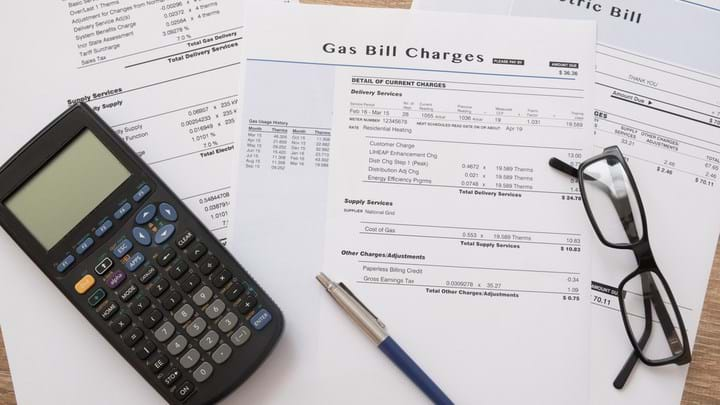Hydrogen: Deployment Barriers

THE hydrogen economy has long been an ambition perpetually just over the horizon for many working in the clean energy sector. The first attempt to kickstart the energy revolution was in the early 2000s with transport fuel cells. Now the hydrogen economy is back on the agenda, revamped and de-risked, with heat being the earliest high-volume user instead of transport.
Introduction
As history has made clear, electric vehicles have leap-frogged over fuel cells to become the flagship low-carbon alternative to fossil-fuelled personal transport. The primary reason for this has been the lower barriers to deployment, principally the inherent interdependency of production and use of hydrogen within hydrogen fuel cells, whilst electric vehicles could benefit from the already-established electricity generation market. The revival of the hydrogen economy has been due to the evolution of thought surrounding sustainability and a realisation that a low-carbon economy requires a more diverse field of energy carriers than simply low-carbon electricity. Hydrogen provides that much-needed diversity due to its physical properties, breadth of application and complementary nature to low-carbon electricity.
Other articles in this hydrogen series have focussed on the potential benefits a hydrogen economy could accrue to society. This article will focus on the barriers and challenges required to be overcome to enable those benefits to materialise. By reductively identifying, quantifying and overcoming challenges and barriers to deployment, the hydrogen economy will have the greatest chance of transitioning from rhetoric to reality. This article will attempt to summarise the current technical, commercial, regulatory and societal barriers to hydrogen deployment and highlight where barriers have been overcome to enable development.
Technical: production and distribution
Technical barriers to deployment largely concern unanswered questions rather than identified fundamental barriers. The necessary production technologies for both distributed power-to-gas production and bulk supply through methane conditioning and CCUS are all technically proven and available technologies. Therefore, there is no fundamental technical barrier related to the production of hydrogen.
The distribution of hydrogen is currently being investigated by two active projects, H211 and H100. The H21 distribution philosophy is to understand if the current gas network is capable of safely distributing pure hydrogen, and the H100 distribution philosophy is to understand what the requirements are of new-build hydrogen distribution assets. Therefore, between these two programmes the lowest cost pathway for safe distribution will be identified and understood.
Technical: users
The acceptability of hydrogen to the current users of natural gas is where the most technical work is required. This is due to the magnitude and diversity of users connected to the gas network, from domestic appliances to commercial and industrial users, combined heat and power to gas turbines, as well as compressed natural gas (CNG) filling stations. There are many programmes underway to understand technical limits of current appliances for initial introduction of hydrogen, as well as the design for pure hydrogen use.
Programmes such as HyDeploy are providing the evidence to understand any technical limitations of current users to accept a hydrogen blend of 20 mol% and the Department for Business, Energy and Industrial Strategy’s (BEIS) Hy4Heat programme is funding the development of hydrogen-ready domestic boilers for future use. Within a domestic setting, active programmes are identifying and addressing challenges to hydrogen. Within an industrial setting, work such as the BEIS Fuel Switching2 programme is identifying potential challenges and route maps to overcome technical issues for industrial users. Within the power generation market, turbine manufacturers such as GE and Siemens are already developing gas turbine equipment that can operate on 100% hydrogen. The users where the most questions remain are with commercial applications, including CNG filling stations. Further work is needed to identify and address any potential technical challenges associated with this market in the UK. Overall though, the technical barriers to hydrogen deployment are being demonstrated to be limited and manageable – further work is required but the collective results of the current technical programmes is very promising!
Commercial

The commercial challenges of hydrogen deployment primarily relate to ensuring the billing process for gas supplies is robust to the introduction of hydrogen. As hydrogen has a lower calorific value (CV) than natural gas, gas meters will register a higher volume of use for the same energy supplied. Ensuring consumers are not disadvantaged by a potentially variable CV, along with ensuring robust energy settlement processes for gas shippers, is required to allow hydrogen to be rolled out commercially.
The Cadent-led Future Billing Methodology (FBM) project has been developed to investigate technical solutions to allow a fit-for-purpose billing regime to be developed in time for gases such as unpropanated biomethane and hydrogen to be introduced into the network without disadvantaging consumers. Although FBM is seeking to understand the technical pathways which would enable lower-CV gases to be embodied within consumers’ bills, to translate these findings to governance it is likely that a modification to the uniform network codes (UNC) will be required. The UNC defines the commercial relationships between gas shippers, transporters and suppliers and therefore underpins a consistent and fair billing process for all consumers.
Regulatory: policy requirements
The largest barriers to hydrogen deployment are regulatory, as it is the regulatory framework that defines commercial deployment models. Without clear regulatory frameworks to allow commercial projects to understand their cost and revenue basis, commercial projects will not be able to reach financial investment decision (FID). CCUS and heat policy are the two largest barriers to bulk hydrogen deployment.
Following publication of the UK Carbon Capture Usage and Storage Deployment Action Plan in November 2018 the CCUS Advisory Group was established by BEIS to develop policy options for consideration. The group has recently published three policy framework options for consultation, which will be reviewed by BEIS. The expectation is that BEIS will publish its preferred policy support framework by the end of the year, which will then be developed into regulation. A clear CCUS policy is required to allow commercial projects to reach FID.
Heat policy is less defined; without clear heat policy the support mechanism for hydrogen to act as a low-carbon heat vector will remain unknown, which in turn will stifle progress of commercial deployment. The current low-carbon heat policy of the UK Government, the Renewable Heat Incentive (RHI), is drawing to a close in March 2021. Therefore, to minimise any development hiatus resulting from regulatory uncertainty, appropriate heat policy to enable support for low-carbon gas deployment will need to be developed with haste.
Regulatory: existing regulation
The 1996 Gas Safety (Management) Regulations (GS(M)R)3, which define the specifications of gas that can be transported within the gas network, limits hydrogen to 0.1 mol%. GS(M)R falls under the 1974 Health and Safety at Work Act4 and is primarily designed to ensure gas networks can only transport gas that domestic appliances are certified to safely operate on. The reason for the very low hydrogen limit is principally due to historical regulatory expedience and simplification, given that North Sea gas does not naturally contain hydrogen.
Although technical programmes are underway to demonstrate that greater levels of hydrogen can be safely transported, there will need to be a regulatory process to embody this evidence within the regulatory framework to allow gas distribution networks to transport hydrogen at greater concentrations than 0.1 mol%. The problem could be solved by applying a class-exemption precedent process, which is the current framework that allows biomethane with higher levels of oxygen to be injected into the gas grid. However, a more enduring solution for hydrogen networks connected to domestic consumers would be an official update to GS(M)R. The Institute of Gas Engineers and Managers (IGEM) is actively seeking to move GS(M)R into a technical standard governed by IGEM, which would allow such modification to be rigorously undertaken without being reliant upon parliamentary processes.
An enabling piece of legislation for the development to hydrogen infrastructure is the 1986 Gas Act5, which establishes the legislative framework of the gas industry and underpins a gas network operator’s licence to operate. The Gas Act defines gas as “wholly or mainly, methane, ethane, propane, butane, hydrogen or carbon monoxide”6; therefore a hydrogen network would fall under the same regulatory regime as a methane network. This legal definition should allow gas transporters to own network assets that transport hydrogen alongside the preexisting transportation assets used for natural gas.
Regulatory: asset ownership
The means of ownership of hydrogen production facilities is a challenge that spans regulatory and commercial. The available options for asset ownership will have a material implication on the cost of capital, and therefore will have a direct effect on the quantity of support necessary to incentivise investment. The lowest capital cost basis would be through a regulated asset base (RAB) model – essentially to treat hydrogen production as a national utility, such as the gas, electricity and water networks. By an appropriate allocation of risk, a RAB model would reduce the cost of capital, which in turn would reduce the level of support necessary to deliver a commercial project. The potential models for hydrogen production ownership is a live debate taking place between government, regulators and industry, the conclusion of which will help inform the commercial and support frameworks necessary for bulk hydrogen production.
Social acceptance

Outside of the quantifiable technical, commercial and regulatory barriers to hydrogen deployment are challenges concerning public knowledge and understanding. The community uptake of hydrogen as a ‘green’ solution to energy delivery will need to be promoted through targeted engagement activities to proactively socialise the benefit of hydrogen to the public. Misconceptions surrounding the safety and use of hydrogen will need to be addressed as well as promoting the environmental credentials of the gas as a means to decarbonise the UK energy system.
De-risking deployment
The number of barriers to deployment of hydrogen can be reduced by strategically designing an appropriate development pathway. By initially deploying hydrogen at a level that is acceptable to the current network and users (which is understood to be 20 mol%), the need to modify the gas network and appliances is eliminated. An example of such a project is the HyNet project, which seeks to supply 2m homes in the North West with a blend of 20 mol% hydrogen. By de-risking the deployment pathway, the sum of deployment challenges can be broken up to allow material quantities of hydrogen to be delivered without the need to solve every challenge at once. This strategy will de-risk the ultimate deployment pathway of hydrogen development and allow society to enjoy the known benefits whilst other challenges relating to greater adoption are being addressed.
The Government’s independent advisor for energy, the Committee on Climate Change, published its Net-Zero Report in May 2019 which outlined the need to develop 270 TWh/y of hydrogen7 to allow the UK to meet its recently-updated carbon target of net-neutrality by 2050. Although the barriers to hydrogen deployment may seem high, the vast majority of them could be overcome with political will. The locus of challenges resides with ensuring an appropriate regulatory and policy framework to allow commercial projects to be developed, with many technical barriers either overcome or with funded programmes to address them.
If hydrogen is to play its part in the UK energy system, and society is to reap all of the environmental benefits available, increased political focus and regulatory clarity will be required.
References
- H21 North of England Report, NGN, November 2018
- Industrial Fuel Switching, BEIS, November 2018
- Gas Safety (Management) Regulations 1996, Schedule 3, Part I
- The Health and Safety at Work Act 1974
- The Gas Act 1986
- The Gas Act 1986, Section 48, Part 1
- Net Zero – The UK’s Contribution to stopping global warming, Committee on Climate Change, May 2019
This is the 13th article in a series discussing the challenges and opportunities of the hydrogen economy, developed in partnership with IChemE’s Clean Energy Special Interest Group. To read more from the series online, visit the series hub.
Recent Editions
Catch up on the latest news, views and jobs from The Chemical Engineer. Below are the four latest issues. View a wider selection of the archive from within the Magazine section of this site.




